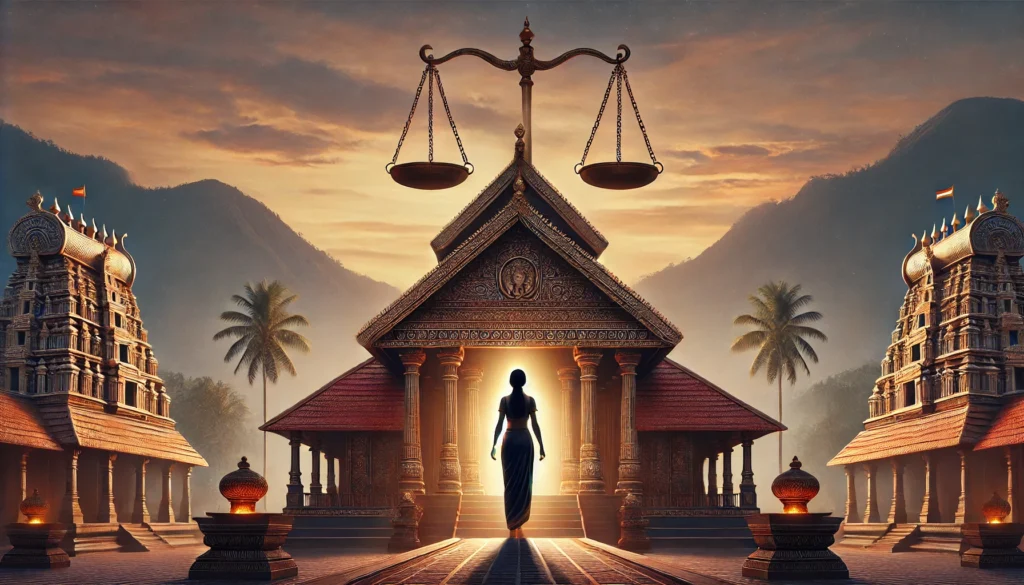Published On: September 25th 2025
Authored By: By: Ruplekha Kalita
University Law College, Gauhati University
Case Title: All India Judges Association & Others v. Union of India & Others; W.P. (C) No. 1022 of 1989
Citation: 2025 SCC OnLine SC 1184
Court: Supreme Court of India
Bench: B.R. Gavai (CJI), Augustine George Masih and K. Vinod Chandran, JJ.
Date of Judgment: May 20, 2025
Relevant Statutes/Key Provisions:
- Articles 233, 234, 235, and 312 of the Constitution of India[1]
- Earlier judgments in All India Judges Association v. Union of India[2] (1991, 2002, 2010, 2022, 1993)
- Bar Council of India Rules and All India Bar Examination (AIBE) regulations[3]
Brief Facts:
This judgment is the latest in a long series of cases beginning with W.P. (C) No. 1022 of 1989, where the Supreme Court has regularly issued directions to reform judicial services in India. The present case arose from multiple interlocutory applications filed by the All India Judges Association and various state judicial officers seeking to revisit and reform recruitment and promotion mechanisms, especially regarding the Limited Departmental Competitive Examination (LDCE) for District Judges.
Previously, in the 2002 ruling[4] (Third AIJA Case), the Supreme Court introduced a threefold mechanism for appointing District Judges:
- 50% by promotion on merit-cum-seniority,
- 25% by LDCE from Civil Judges (Senior Division), and
- 25% by direct recruitment from the Bar.
In 2010 (Fourth AIJA Case)[5], the Court reduced the LDCE quota to 10% due to implementation difficulties and low candidate availability. Over time, stakeholders began pushing for restoration of the original 25% quota and other reforms to better reflect the current administrative landscape.
Issues Involved:
- Whether the 10% quota for LDCE for District Judge promotion should be restored to 25%.
- Whether the qualifying experience for LDCE eligibility should be reduced from 5 years to a lower threshold.
- Whether there should be a merit-based promotional quota for Civil Judges (Junior Division) to Civil Judges (Senior Division).
- What percentage and minimum experience should be applied for such merit-based promotions.
- Whether LDCE quota should be calculated on the basis of cadre strength or yearly vacancies.
- Whether a suitability test should be introduced for promotions via merit-cum-seniority under the 65% quota.
- Whether the earlier requirement of minimum 3 years of legal practice for Civil Judge (Junior Division) exams should be reinstated.
- If so, whether such experience should be calculated from the date of provisional enrolment or passing the AIBE.[6]
Arguments:
Petitioners’ Arguments:
- Incentivization of Merit: Restoring the 25% LDCE quota would foster a competitive, merit-driven judicial culture and address stagnation in lower judiciary promotions.
- Eligibility Flexibility: The five-year experience requirement for LDCE eligibility creates disincentives as candidates may already be promoted through regular channels before qualifying. A cumulative 7-year experience (including Junior Division) would serve the intended purpose better.
- Uniform Rule Framework: Varying interpretations by different states and High Courts undermine consistency. Judicial reforms should be implemented uniformly across the country.
- Efficiency and Motivation: Creating merit-based promotion channels from Junior to Senior Division would encourage younger judicial officers and improve system performance.
Respondents’ Arguments:
- Administrative Feasibility: Many High Courts reported persistent difficulties in filling LDCE vacancies, resulting in judicial delays.
- Diversity of State Conditions: Uniform rules may not be practical given differences in state-level judicial strength, structure, and procedural rules.
- Rule Sufficiency: Some respondents contended that existing promotion and selection mechanisms already balance merit and seniority adequately.
- Status Quo Preservation: Abrupt changes could disrupt service expectations and affect morale among officers awaiting regular promotions.
Judgment:
The Supreme Court modified earlier decisions and suggested systemic changes after thoroughly addressing all eight issues and issuing broad directives:
- Restoration of LDCE Quota to 25%: The Court reversed its 2010 directive that had reduced the quota to 10%, holding that the original 25% quota should be reinstated. However, any unfilled seats under LDCE must be filled via regular promotion in the same year.
- Reduction of Experience Requirement: The Court modified the qualifying experience for LDCE eligibility to a minimum of 3 years as Civil Judge (Senior Division) or a total of 7 years as a judicial officer (including Junior Division). This change ensures officers are incentivized to pursue LDCE without being pre-emptively promoted through seniority-based routes.
- Merit-Based Promotion from Junior to Senior Division: The Court introduced a new 10% quota for Civil Judges (Junior Division) to be promoted to Senior Division through LDCE. Eligibility requires a minimum of 3 years’ service, to foster merit-based career progression.
- Cadre Strength vs. Annual Vacancies: The Court held that quotas (such as for LDCE) should be calculated based on total cadre strength, ensuring consistency across states.
- Suitability Test for Merit-Cum-Seniority Promotions: The Court reaffirmed the necessity of a structured suitability test to objectively assess candidates promoted through the 65% quota. It directed all High Courts and state governments to frame or revise rules to include factors such as:
- Legal knowledge,
- Quality of judgments,
- ACRs (Annual Confidential Reports),
- Case disposal rates, and
- Pending disciplinary proceedings.
- Minimum Practice for Civil Judge Entry: The Court reserved its decision on reintroducing the 3-year legal practice requirement. It directed stakeholders to submit views on whether practice duration should be calculated from the date of provisional enrolment or AIBE qualification.
Ratio Decidendi:
- Merit and efficiency must be incentivized within the judicial service, especially through internal competitive mechanisms such as LDCE.
- Eligibility criteria must be tailored to practical realities, ensuring that officers are not disincentivized from taking competitive exams due to overlapping promotion timelines.
- Uniformity in recruitment and promotion mechanisms is essential for consistency in judicial administration across Indian states.
- Objective evaluation mechanisms, including suitability tests, are integral to ensuring merit-based appointments and maintaining public confidence in the judiciary.
Obiter Dicta:
- The Court emphasized the evolving nature of the Indian judiciary and the need for continuous reform in service conditions to meet changing administrative needs.
- It also hinted at a future reassessment of the entry-level practice requirement in light of legal education quality and bar regulation challenges.
Final Decision:
- The Court allowed all major reliefs sought in the IAs.
- Restored the LDCE quota to 25%.
- Reduced the qualifying experience for LDCE to 3 years (Senior Division) or 7 years cumulative service.
- Introduced a 10% quota for promotion from Junior to Senior Division based on merit.
- Reinstated the earlier requirement that candidates must have a minimum of three years’ legal practice to be eligible for recruitment as a Civil Judge (Junior Division).
- Directed all states and High Courts to amend their Judicial Service Rules accordingly.
- Held that unfilled LDCE seats must revert to regular promotion channels in the same year.
Conclusion:
An important turning point in India’s ongoing judicial reform process was reached in the 2025 ruling in All India Judges Association v. Union of India. The Supreme Court has made an effort to strike a balance between institutional effectiveness, administrative viability, and the requirement to reward judicial merit through a number of well-reasoned rulings. The Court has restored the original purpose of merit-based fast-tracking in the judiciary by lowering the qualifying service requirement and restoring the 25% LDCE quota for promotion to the cadre of District Judges. Another progressive change aimed at inspiring young judicial officers is the implementation of a 10% merit-based quota for the promotion of Civil Judges from the Junior Division to the Senior Division.
Additionally, the Court has reaffirmed the significance of upholding competence and quality within the higher judiciary by requiring suitability tests and objective evaluation criteria for promotions under the merit-cum-seniority route. State-by-state consistency and predictability in hiring procedures are guaranteed by the directive to base quotas on cadre strength rather than annual vacancies.
Crucially, the Court exercised restraint when it came to reintroducing the minimum practice requirement for entry-level judicial positions. It kept a cautious but inclusive stance by postponing a final decision and requesting more extensive consultation.
All things considered, the ruling represents a careful re-evaluation of judicial service regulations and is probably going to have a long-term effect on the composition, morale, and effectiveness of India’s lower courts. It establishes the standard for uniform national standards in judicial promotions and appointments in addition to upholding the constitutional goal of an independent and capable judiciary.
References:
[1] The Constitution of India
[2] All India Judges Association & Others v. Union of India & Others (1992) 1 SCC 119: 1991 INSC 290
All India Judges Association & Others v. Union of India & Others (2002) 4 SCC 247: 2002 INSC 165
All India Judges Association & Others v. Union of India & Others (2010) 15 SCC 170
All India Judges Association & Others v. Union of India & Others (2022) 7 SCC 494: 2022 INSC 445
All India Judges Association & Others v. Union of India & Others (1993) 4 SCC 288: 1993 INSC 272
[3] Bar Council of India, All India Bar Examination Rules 2010
Bar Council of India, Certificate of Practice and Renewal Rules 2014.
[4] All India Judges Association & Others v. Union of India & Others (2002) 4 SCC 247: 2002 INSC 165
[5] All India Judges Association & Others v. Union of India & Others (2010) 15 SCC 170
[6] Supreme Court Observer, ‘Three Years of Practice Must for Civil Judge (Junior Division) Eligibility’ (SCO|LR, 21 July 2025) accessed 26 July 2025.




